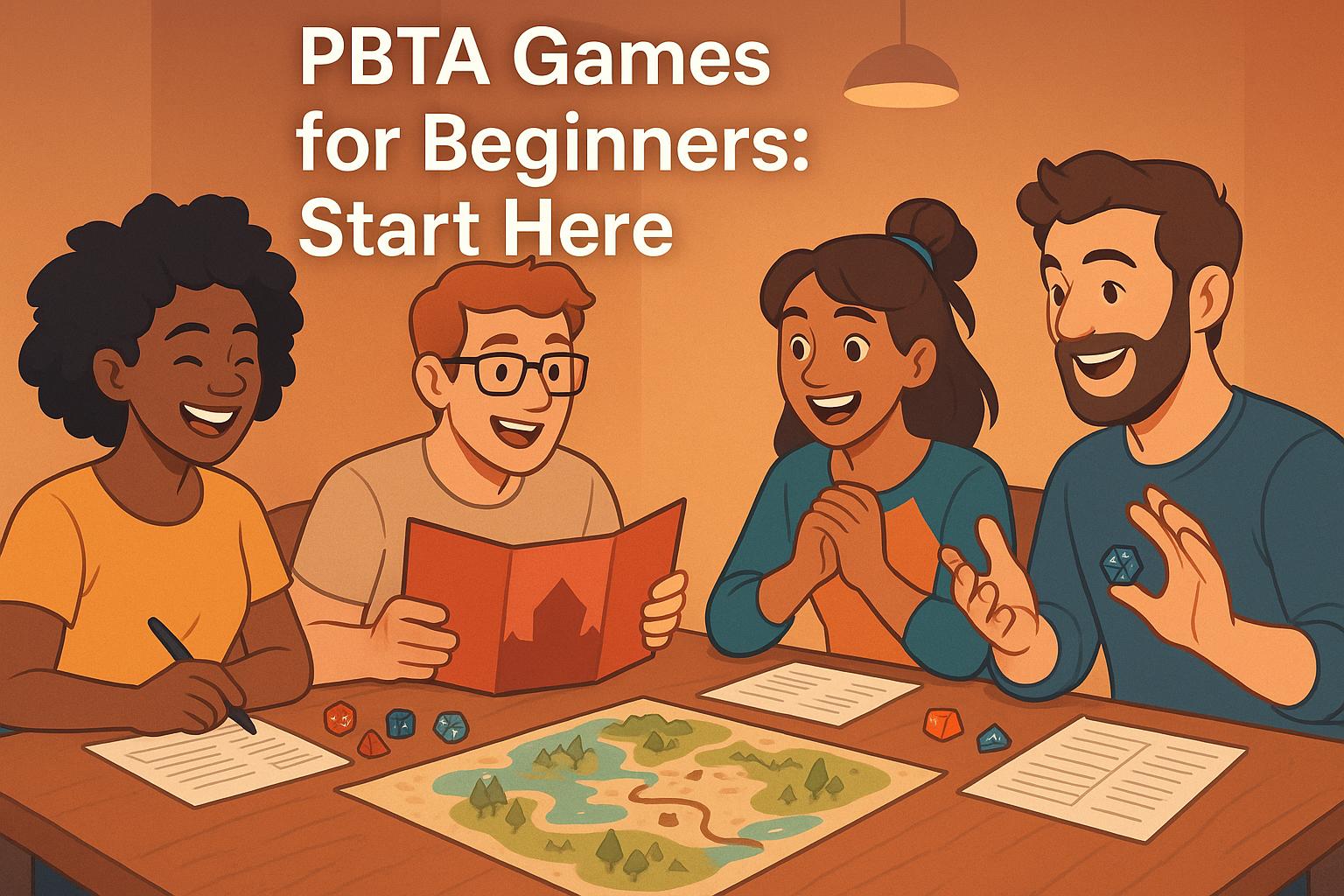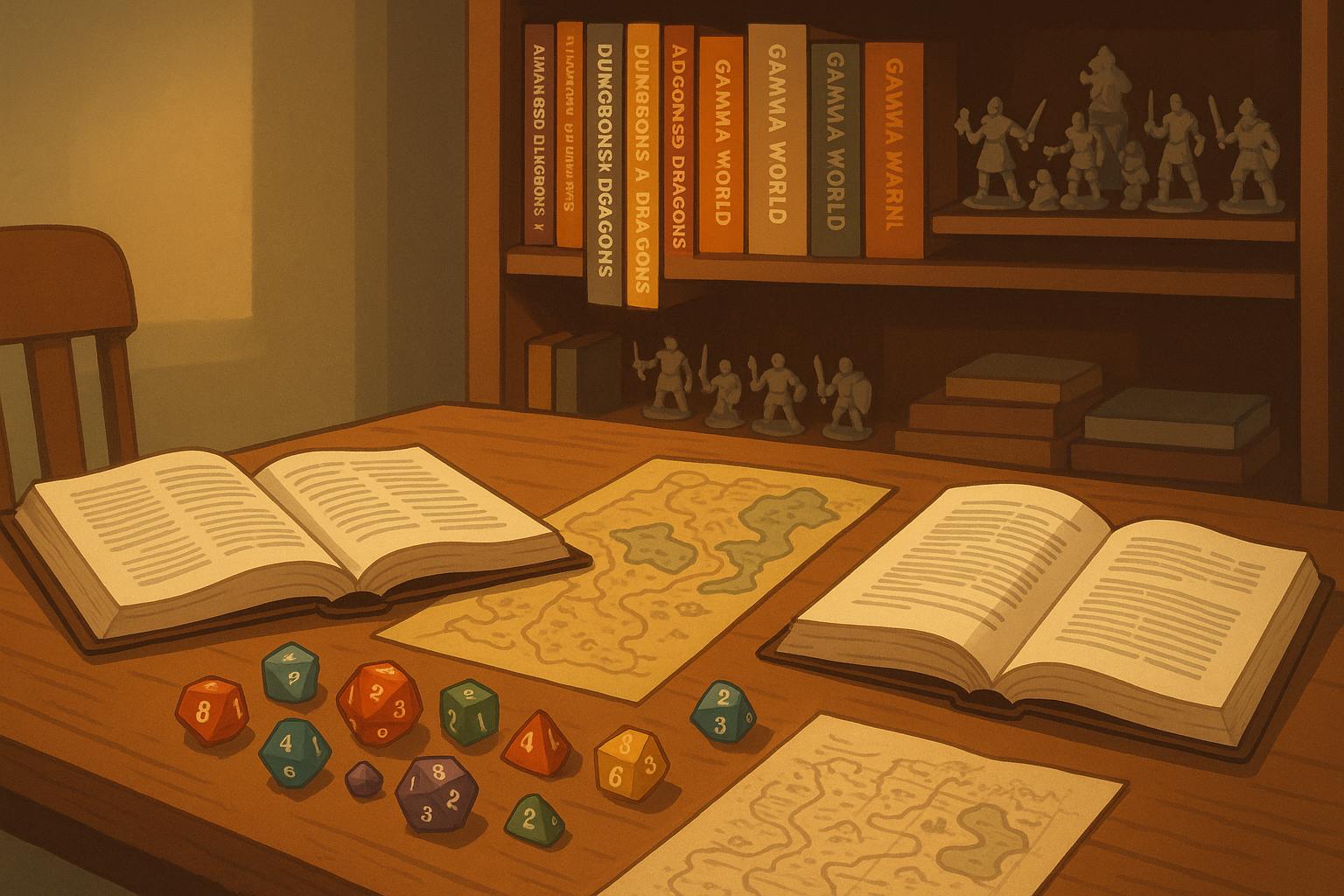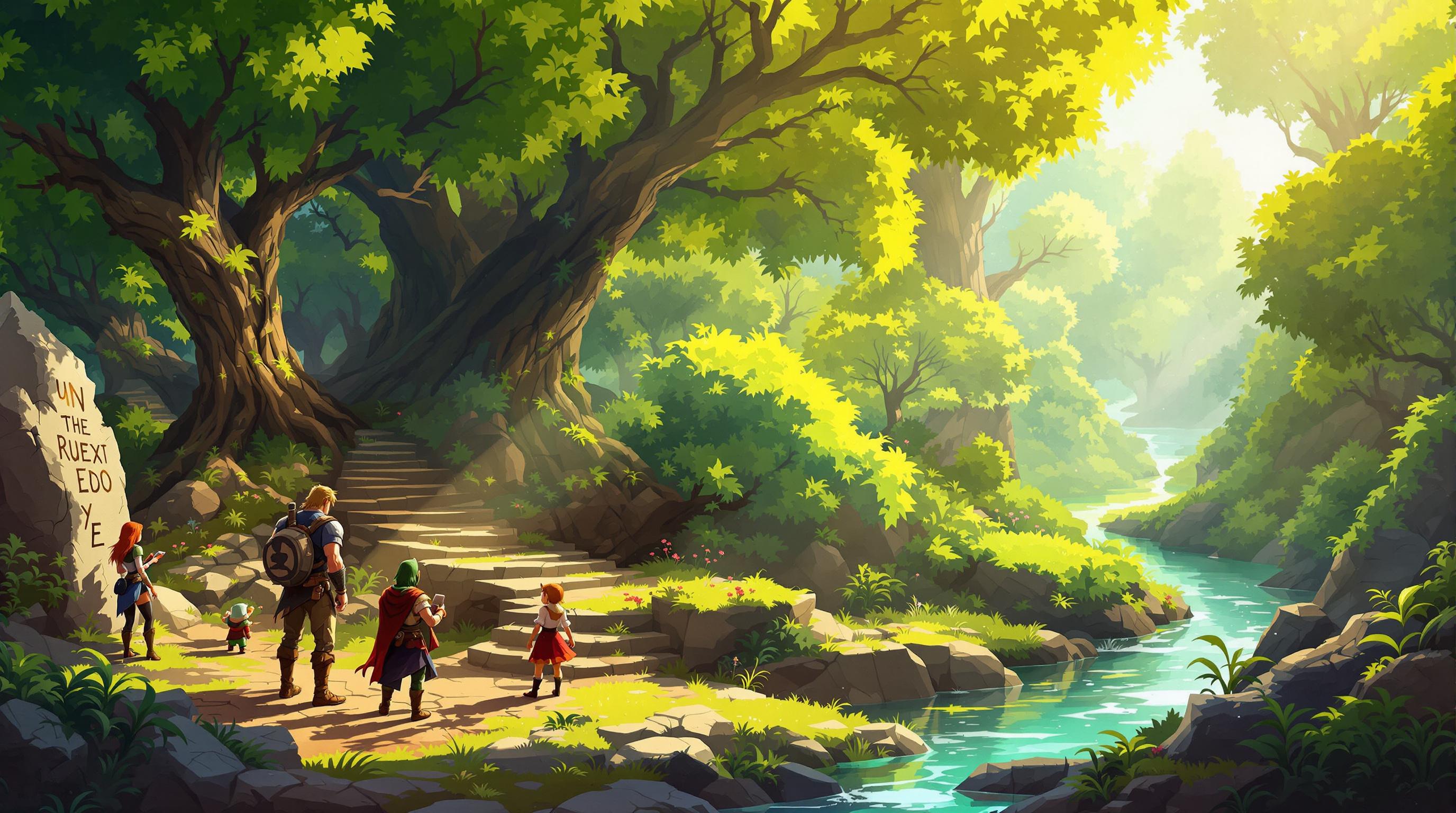Creating believable fantasy worlds isn’t just about magic and mythical creatures - it’s about ecosystems that make sense. Here’s how to design fantasy plants and animals that feel alive:
- Start with nature: Use real-world traits (like desert animals storing water) as inspiration.
- Add magic thoughtfully: Blend magical traits with natural ones, like glowing mushrooms that attract insects.
- Balance ecosystems: Include food chains, habitats, and population dynamics to avoid breaking immersion.
- Connect to society: Show how species impact traditions, tools, or settlements in your world.
- Avoid common mistakes: Don’t ignore food chains, overuse magic, or place creatures in unsuitable environments.
Quick Tip: Combine familiar species with subtle magical twists for a grounded yet fantastical feel. For example, a forest might include regular trees, “whispering willows,” and rare “phase oaks” that turn incorporeal during full moons.
Designing ecosystems this way makes your RPG world immersive, logical, and engaging for players.
Designing a Magical Ecosystem
Basic Rules for Fantasy Species Design
Creating fantasy species is all about blending creativity with real-world biology. By using natural systems as inspiration, you can design species that feel believable while sparking a sense of wonder.
Using Nature as a Blueprint
Real-world adaptations can serve as excellent starting points for your designs. For example, animals in deserts often have large ears to regulate heat or the ability to store water. These principles can be reimagined to create magical creatures suited for similar environments.
When designing a new species, think about these biological factors:
- Physical traits: How the creature's body is adapted to survive in its environment.
- Behavior: Social habits, daily activities, and survival techniques.
- Environmental role: How the species interacts with its surroundings, including climate, terrain, and other organisms.
- Life cycle: Growth stages, reproduction, and lifespan.
Even magical elements should have a purpose. For instance, a glowing mushroom could use its bioluminescence to attract insects, mimicking how some real fungi spread their spores.
To make your ecosystem richer, mix ordinary species with subtle magical features.
Combining Common and Magical Species
A believable fantasy ecosystem balances familiar creatures with those that have a magical touch. Adding small magical details to recognizable species helps ground your world while keeping it intriguing.
Here are a few approaches to blending species:
- Include familiar animals and plants: These act as a foundation for your ecosystem.
- Add small magical twists: Give common species subtle magical abilities or traits.
- Reserve fully magical creatures for special moments: Save the most extraordinary beings for impactful scenes.
For example, a forest could include:
- Ordinary oak and maple trees.
- "Whispering willows" with leaves that seem to murmur ancient secrets.
- Rare "phase oaks" that turn incorporeal during full moons.
This layering of the familiar with the fantastical creates a world that feels both grounded and magical, making it easier for players or readers to immerse themselves in your creation.
Methods to Mix Reality and Magic
Define Species Purpose and Features
Start by outlining the ecological role and survival traits of each creature. Think about:
- Diet: Herbivores might rely on specific plants, while carnivores need access to appropriate prey.
- Defense mechanisms: These could be physical, like armor or camouflage, or magical, such as invisibility or resistance to certain elements.
- Habitat needs: Factor in temperature, terrain, and water requirements.
Take a frost-breathing mountain drake as an example. It could have thick scales for insulation, claws for gripping icy surfaces, and the ability to metabolize minerals from frozen rocks. These traits not only help it survive but also weave in magical elements that align with its environment.
Add Magic Elements That Make Sense
Magical traits should work alongside, not replace, natural adaptations. Think about how supernatural abilities might evolve with physical features. Focus on:
- Energy use: Magical abilities should consume resources, just like physical ones.
- Environmental triggers: Tie magical traits to specific conditions or stimuli.
- Survival advantages: Every magical feature should serve a purpose.
For instance, imagine luminous desert flowers that absorb sunlight during the day and release healing energy at night. These flowers attract nocturnal pollinators, deter herbivores, and provide a renewable magical resource. This blend of practicality and magic makes them feel grounded in the world.
Connect Species to Society
Fantasy creatures and plants should shape the cultures around them. Think about how communities might:
- Develop traditions based on the behaviors of magical species
- Invent tools or methods for safely gathering magical materials
- Design buildings that accommodate local magical fauna
For example, if certain trees naturally enhance magical energy, settlements might form circular layouts around them. Craftsmen could set up workshops in concentric rings to harness the trees' effects, and festivals or customs might emerge around the trees' seasonal cycles. These relationships between species and society add depth and realism to your world.
sbb-itb-b8b00a5
Common Mistakes to Avoid
When building believable ecosystems in RPG worlds, there are a few common mistakes that can throw players off.
Ignoring Food Chains: Adding powerful magical creatures without considering their role in the food chain can make the ecosystem feel unrealistic and unstable.
Magical Abilities Without Costs: Unlimited magical powers disrupt the balance of the world. Supernatural abilities should rely on physical resources or come with limitations.
Environmental Inconsistency: Placing creatures in habitats that don’t meet their needs breaks immersion. Each species should have clear ways to survive and thrive in its environment.
Overlooking Population Balance: Adding apex predators without enough prey or herbivores without enough flora creates an imbalance that undermines the ecosystem.
Natural vs. Pure Fantasy: What Works Best
Creating a compelling world means finding the right mix of natural processes and fantastical elements.
Challenges of Pure Realism:
- Limits creative storytelling
- Can make settings feel dull or overly familiar
- Misses opportunities for unique gameplay features
Issues with Pure Fantasy:
- Worlds may feel random or disconnected
- Inconsistencies can break immersion
- Often leads to unchecked power escalation
How to Strike a Balance:
- Start with Natural Systems: Build a foundation using realistic ecosystems, complete with food chains, reproduction cycles, and habitat needs.
- Layer in Magic Thoughtfully: Add supernatural elements that complement, rather than replace, natural systems.
- Set Clear Limits: Tie magical abilities to specific resources or environmental factors to maintain balance.
| Design Approach | Benefits | Drawbacks |
|---|---|---|
| Nature-First | • Feels grounded • Stable |
• Limits fantasy |
| Magic-First | • Highly creative • Unique |
• Harder to balance |
| Balanced Hybrid | • Rich storytelling • Cohesive |
• More complex to design |
The goal is to design worlds where magic and nature coexist within clear, logical boundaries. This approach keeps players engaged while maintaining a sense of immersion.
Using Species in Your Game
Turn Species into Story Elements
You can weave species into your game's story by making them part of the gameplay itself.
- Resource Quests: Create missions that revolve around collecting or tracking. For example, a rare healing herb that only blooms during a lunar eclipse or a creature that consumes crystals could set up time-sensitive challenges.
- Environmental Challenges: Use species to introduce natural obstacles. A forest filled with carnivorous plants might require clever navigation, while territorial magical creatures could push players toward diplomacy rather than combat.
- Cultural Integration: Incorporate species into the daily life of the game world. Imagine homes built from enchanted hardwood, creatures trained for transportation, or traditions tied to the migration of a unique species.
| Role | Gameplay Impact | Narrative Impact |
|---|---|---|
| Resource | Gathering quests, crafting systems | Trade routes, regional specialties |
| Obstacle | Environmental challenges, tactical combat | Disputes over territory, conservation themes |
| Social Element | NPC interactions, cultural practices | Festivals, traditions, beliefs |
These elements allow species to shape both gameplay and story, much like what’s seen in many tabletop RPGs.
Learn from Other Games
Looking at how other games handle species can help refine your own designs. The TTRPG Games Directory is a great place to find examples of fantasy ecosystems in action.
- Ecosystem Integration: Study how creatures and plants are embedded into game worlds. Are they food sources? Magical catalysts? Do they serve multiple purposes?
- Balance Mechanics: Pay attention to resource availability, habitat limitations, predator-prey relationships, and seasonal changes in abilities.
- World-Building Tips: When crafting your own species, think about:
- Their interactions with existing plants and animals
- How they affect nearby communities
- Their place in the larger ecosystem
- The balance between their magical traits and natural behaviors
Conclusion: Building Better Game Worlds
Creating believable fantasy flora and fauna means blending creativity with natural principles. When magical elements are rooted in realistic ecological systems, players can better understand and engage with your world.
Start with real-world inspirations and layer in magical features that have clear purposes in your game. Whether it's designing strange creatures or otherworldly plants, each species should play a role in both the environment and the story.
This approach does more than guide design - it shapes gameplay that feels alive. Fantasy worlds thrive when their ecosystems make sense, with species interacting in meaningful ways. A world becomes richer when its creatures and plants tie into regional resources, environmental challenges, and the societies within your game.
Key considerations include:
- Designing creatures and plants to serve multiple roles in the ecosystem
- Creating clear connections between magical and natural elements
- Using species design to deepen both gameplay and storytelling
- Establishing consistent rules for how magic impacts biology
Instead of mimicking real-world biology, aim to design fantasy elements that feel natural in your game's unique context. When species fit seamlessly into their environments, players feel more immersed, making the entire experience more engaging. Apply these ideas to craft game worlds that feel alive and interconnected.
FAQs
How can I create magical flora and fauna in my RPG setting without breaking the world's balance?
To design magical flora and fauna that feel both fantastical and grounded, start by tying their traits and abilities to the logic of your world. Consider how these elements interact with the environment, ecosystems, and inhabitants. For example, a plant that glows in the dark might thrive in a world with long nights, serving as a natural light source for nocturnal creatures.
Balance can also be maintained by setting clear limitations or costs for magical features. A creature with powerful abilities might require rare resources to survive, or a magical plant could only grow under specific conditions. This helps ensure that these elements feel integrated into the world rather than overpowered or out of place.
Lastly, think about how these magical features impact your story and gameplay. Use them to enrich the narrative or provide opportunities for creative problem-solving, rather than overshadowing other aspects of the game.
How can fantasy flora and fauna be woven into the culture and society of an RPG world?
Integrating fantasy flora and fauna into your RPG world can make it feel more immersive and alive. Consider how these elements influence daily life, traditions, and economies. For example, a rare glowing flower might be used in religious rituals or as a prized commodity, while a domesticated creature with unique abilities could transform transportation or agriculture.
To ground these fantastical elements, think about their ecosystems and practical uses. Do certain plants have medicinal properties that drive trade or conflict? Are specific creatures revered as symbols of power or feared as dangerous predators? By linking flora and fauna to the culture, history, and survival of your world’s inhabitants, you create a richer, more believable setting that players will love to explore.
How can I create fantasy creatures in my RPG that feel both imaginative and scientifically believable?
To design fantasy creatures that feel grounded yet fantastical, start by drawing inspiration from real-world biology. Think about how animals and plants adapt to their environments - consider factors like climate, terrain, and available resources. For example, a predator in a dense forest might evolve camouflage or silent movement to stalk prey effectively.
You can also mix and match traits from different species to create something unique while maintaining internal logic. For instance, combining the agility of a cat with the sensory abilities of a bat can result in a believable nocturnal hunter. Just ensure the creature's abilities and appearance make sense within your game's ecosystem.
For more ideas and inspiration, explore tabletop RPGs that feature detailed world-building. Many games offer excellent examples of how to balance creativity with realism, helping you craft creatures that enhance your setting's immersion.


